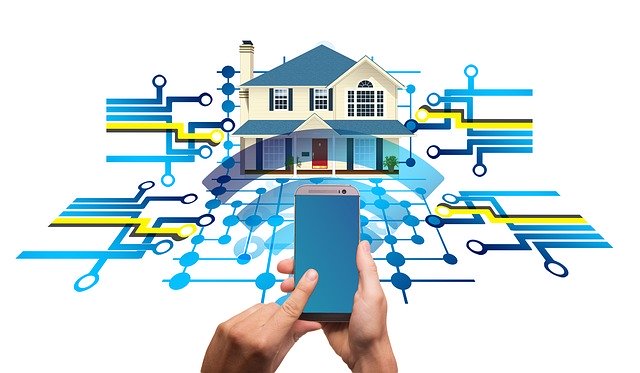Future of Smart Homes
Statista believes that the future of smart homes is exciting with an estimate of 75.4 billion devices connected to the internet by 2025. Commercial and industrial infrastructures are already being equipped with IoT technology driven by Power over Internet (PoE) and homes are not far behind. Amazon Alexa, Google Assistant, and Apple’s Siri are widely used to control music, windows, door locks, lighting, HVAC and more in the average American household. Based on the current popularity, it looks like smart homes will have a bright future. Power Moves is a great resource and starting point for anyone looking to add to their smart home setup.
Smart home technology advancements
Like all technology, smart home technology is improving at an exponential rate. Below are predictions of the future of smart homes with technology-driven by IoT and PoE.
1. Artificial intelligence
Smart homes will soon be able to identify and track each person’s location in the house via electronic sensors inside the house or an electronic pin on clothing. The house will know who is in a particular room and anticipate the person’s needs and take action such as playing music or adjusting lighting and temperature. The technology is already being used in Bill Gates’ home and is anticipated to go mainstream soon.
2. Smart lighting
There is an expectation that smart lighting powered and controlled by PoE will transform the way homes are illuminated. It can detect the presence of a person in a room, automatically turn on the lights when the person enters and turn off or dim the lights when the person exits. Many applications exist such as pressure sensors that can switch off lights when a person has been lying in bed for some time. Smart lighting can turn on lights (with controlled brightness) at night when a person gets up to go to the toilet and turn them off when the person goes back to bed. Every device in the home can be tailored to the user’s needs.
3. Smart locks
Smart locks can also be programmed to the user’s needs. Visitors can be given or denied access to the smart lock via a phone app. August Pro is a great example of this technology. It automatically locks the door after a set period of time (between 3-60 minutes), then automatically unlocks when the owner returns home. Repairmen, cleaners, and visitors can be given one-time or recurring access codes the house for specific time durations.
4. Home monitoring
Security is always an issue when people go away for vacation. Smart security systems enable the house to monitor itself and report any unusual incidents to the homeowner and even emergency services when necessary. Soon, the systems will be able to monitor elderly people living on their own and remind them to complete day-to-day tasks or to take medication. In case of emergency, emergency services can be called and remotely allowed into the house with a smart lock.
5. Energy management
Energy management is crucial for every household. Experts estimated that various non-essential appliances use 20% of the energy in an average American home. Smart outlets and plugs can cut this wastage by half. Smart energy monitors stop energy drainage by tracking energy usage whether people are home or not. They also have appliance detection features that detect which gadgets are on and when. Smart thermostats help by providing more precise control of the interior temperature, to prevent unnecessary heating or cooling of unused spaces. Smart sprinklers save time, energy and water by monitoring soil moisture levels, the weather and the moisture needs of various plants.
PoE smart homes
Each device on a smart home network needs a source of power and a way to communicate with the network, and PoE can do both cheaply and easily. The 100W PoE standard enables PoE to be used even with power-hungry devices such as LCDs and televisions. With PoE, there is no need to run a separate power cable for each device in the house or to install power outlets in hard-to-reach locations. PoE is driving the IoT and smart home network revolution due to its affordability, flexibility, and practicality.
Integration limitations
There are many great IoT devices but at present, there is no affordable mainstream way to interconnect them. So, at present, the various voice-controlled gadgets have to be controlled separately. Until such time that a central control system becomes available, mainstream smart homes belong to the future. Security is also an issue. All the cameras, sensors, data tracking AI and voice-activated control systems make information available to companies and government, taking away privacy entirely.
Smart homes have an exciting future
Smart homes are convenient and they save time, money and energy. As technology advances in various ways, smart homes will enter the mainstream market and how homes operate will be changed forever.
Useful resources:
Smart home privacy and security – https://www.nist.gov/publications/perceptions-smart-home-privacy-and-security-responsibility-concerns-and-mitigations
Research on smart-ready homes: https://www.karger.com/Article/Abstract/497803

Avi Ben Ezra is the CTO of SnatchBot

